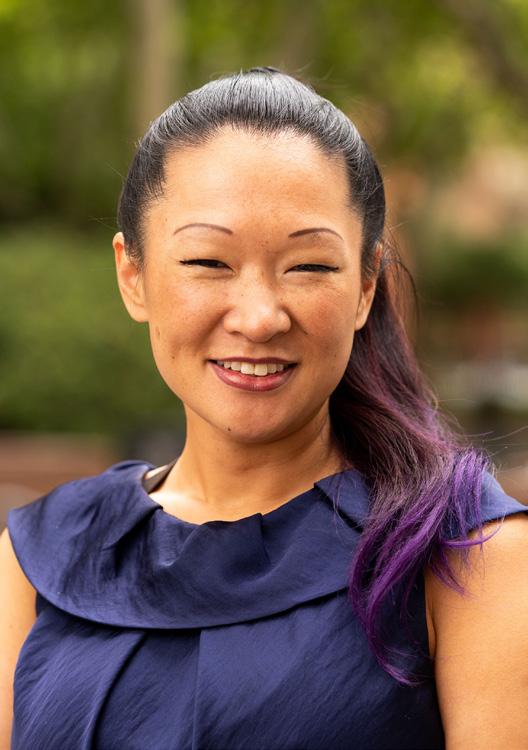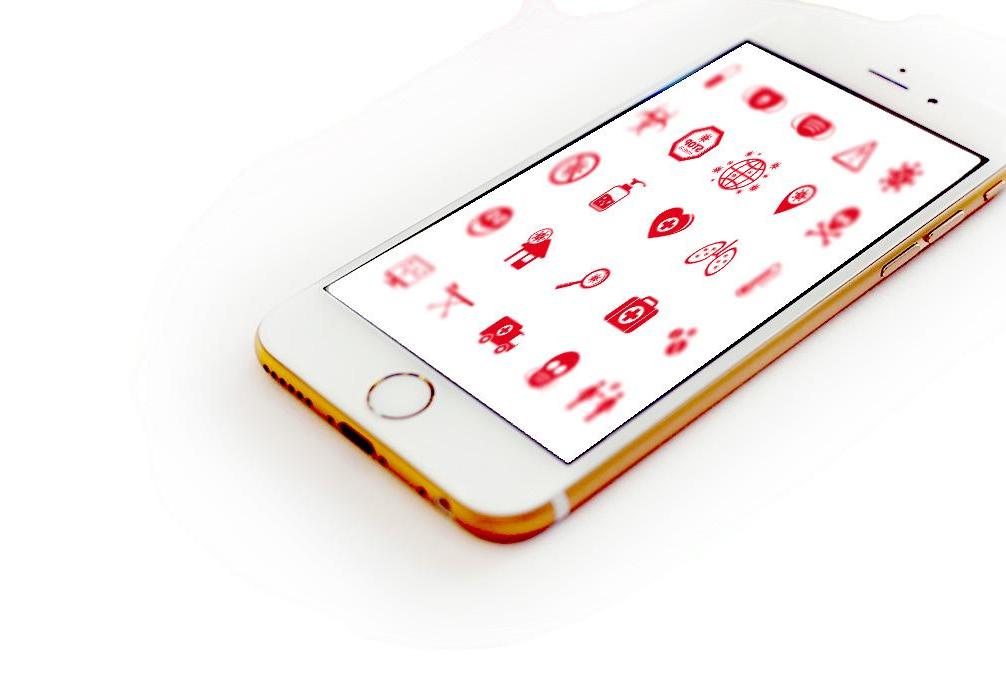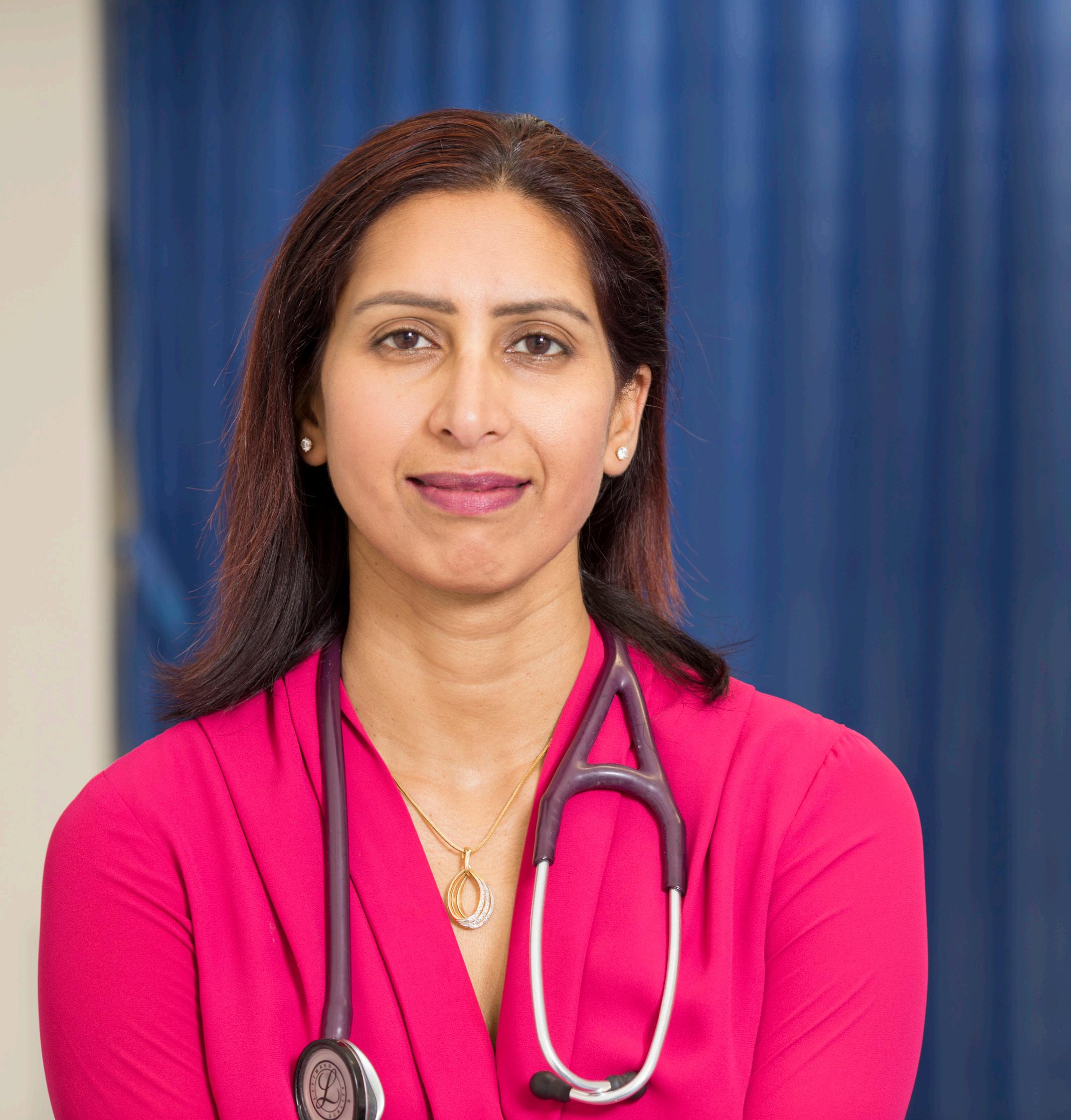
8 minute read
Developing an App-Based Home Flu Test
BY SARA JAMES
The COVID-19 pandemic means medical researcher Monique Chilver now works from home. But the efforts of this Fulbrighter at the University of Adelaide could help all of us get back to business—and life as usual—sooner.
“I wake up in the morning reading COVID news from around the world and go to sleep reading publications on PubMed.”
Chilver is an Australian expert in flu pandemics and infectious diseases.
Over the last decade, she’s studied respiratory viruses that go global, including the H1N1 Swine Flu pandemic of 2009. Chilver’s work in influenza and infectious disease surveillance systems led to a 2020 Fulbright Scholarship.
She planned to work on a project developing an appbased home test for the flu.
But her upcoming project at the University of Washington in Seattle was put on a hold when a new corona virus became Public Enemy Number One.
Chilver’s job is to stalk what the ever-irreverent Aussies have nicknamed “The ‘Rona.” To bring the deadly virus to heel, successful surveillance is paramount.
“Flu Surveillance aims to test community transmission of COVID-19 -- cases that aren’t linked to overseas travel or a known case.”
The data that Chilver and her team collect goes to top state and federal health authorities and to the World Health Organisation.
While COVID-19 has put Chilver’s Fulbright plans on hold, the virus hasn’t ended her collaboration with the University of Washington.
“We speak every week. We’re collaborating on a Point-of-Care test -- a way for physicians to diagnose the flu, or COVID-19, more quickly -- that we’ve been developing in the form of an app known as Flu@Home”
Chilver admits life is busy. “Although my job revolves around planning for a pandemic, I never imagined the virus would blow out this way. I’ve been working 60 hours a week.” Like other parents, she must juggle her job with helping her daughter tackle school online.
Then there’s the health crisis with the family betta fish.
“I think that it is certainly a case of the fish tank imitating life, as the fish started dying off in January. Not to mention the fact that the isolated fish have been completely unharmed! Social distancing works in many settings.”
But Monique Chilver has no complaints. “I love what I do. And I find time for walks with my partner and daughter.

"I remember the silver linings.”
STAY CALM AND BANISH FEAR:
A Doctor’s First Day Treating COVID-19 Patients

A mother’s heart harbours, in equal measure, dread and love.
“Can’t you take sick leave?” mine suggests before realising the answer for herself.
I have just shown her a text message from a colleague. “The Covid round is arduous, take good care.”
In the now forgotten past when we knew so little, I had agreed to join the Covid-19 roster. Now, with a global toll of 200,000, that casual offer has turned consequential. In preparation, I talk to my friend with Covid skills, a new category born just weeks ago. Slow down. Don and doff PPE (personal protective equipment) with great care. Carry your stethoscope in a kidney dish. Don’t touch your face.
But it’s his last exhortation that strikes me. Remember that our patients are scared. Spend time with them and calm their fears. The irony of how to reconcile the sage advice with the natural instinct to get in and out of a room as quickly as possible doesn’t escape me. The night before the round, I memorise the PPE process, as if watching the video from three countries will make me thrice as safe. In the morning, I shed my wedding ring, find old clothes and head off quietly before the children wake up. No point in creating unnecessary drama.
The roads are deserted but the handover room in the hospital is bustling as the night and morning teams meticulously go through each admission.
A ward of “suspects” await swab results. Patients, young and old, have arrived with many symptoms.
The community rate of carriage is as yet unclear and the tests aren’t perfect, which means that some patients must be retested. One only has to cast an eye on the global havoc to appreciate that Australia has been guided into a very fortunate position, but no one thinks it’s time to relax. Consequently, every suspected patient must be considered positive and no clinician will let complacency trump caution.
“Good luck,” everyone says to the Covid team, an acknowledgement of our increased risk.
On the ward I am greeted by six doctors, three of them interns caught in this maelstrom within a month of starting their career. I feel for them.
Why did I think the first decision of the day would be where to begin the round?
“The consultant decides who goes in,” a trainee says.
When I was still seeing cancer patients in clinic, I was shielded by everyone who understood the importance of keeping me safe to keep my patients safe. Now, that need has abated as outpatients have moved to telehealth.
Suddenly, I recall my colleague’s words that had meant nothing at the time.
“Just to let you know, I’ve been going in every time.” (So? Isn’t that how ward rounds work?)
In the unequal world of medicine that aspires to lose its hierarchy but often comes up short, I realise that my seniority has bestowed upon me a privilege with life-anddeath implications.
Institutions around the world are trying to navigate the tricky balance of who is exposed to patients and how often, although in inundated places there is little choice.
“I’ll go in,” I say. “I need to know the patients.”
Shoulders relax.
“Would you like someone to scribe inside the room?”
“No, that’s unnecessary.”
“Would you mind being watched as you don and doff?”
Appreciating the care it takes to say this to one’s boss, I reply: “I’d really appreciate that.”
The PPE feels foreign and being alone in every room is strange but once inside the pattern is the same.
Take a good history, examine the patient, provide counsel.
Don’t interrupt unnecessarily.
Say urgent things calmly.
Make eye contact even if it’s from behind plastic.
A young woman is clammy and feverish. Her relief crashes when I say that her negative test doesn’t yet reassure me. An elderly man bursts into tears at his negative status. He only had a few years to live, anyway, he cries as his emotional nurse celebrates the end of his isolation.
Other patients don’t speak English, can’t hear the interpreter and can’t operate a smartphone.
For now, universal gestures for discomfort, breathlessness or nausea must do.
reassure me. "
Through the glass panel, one trainee has eyes set on me. The doffing is stressful because it’s when the wearer faces the highest risk of exposure. I remind myself to slow down and banish awful stories from my head.
One cannot be a calm and methodical doctor without making some sort of peace with the knowledge that one or more patients could be infectious. It would be unproductive and frankly indulgent to view every minute spent seeing patients as self-sacrifice.
Resentful doctors can’t be effective doctors. On the other hand, to be loose with words or ignore the very real consequences of sloppy hygiene or lax protection would be unconscionable.
I work my way through these new learnings, pausing outside between patients to dictate notes and still trying to find teaching moments, which mostly have to do with the importance of empathy.
When everyone is on edge, we really are in it together.

Late in the afternoon I reach the final patient and the stakes truly rise because he is a confirmed patient who was not expected to live. My colleague had emphasised the emotional flux of such patients who prepared to die but find themselves alive, not sure whether to feel guilty or glad.
He is pacing the room, looking dejected. But his numbers look so good that I feel a stirring of happiness.
“Would you like to go home today?”
He stops short in his track.
No matter how little English they possess, no patient has ever been confused by “home”.
“For real?” he stammers.
“Yes.”
He starts crying, not having dared to imagine leaving alive.
I’ve removed my gown when he reaches out to hug me. I leap back, surprised by my own agility but also embarrassed to treat him as untouchable. Embarrassed, he retracts. On the spur of the moment, I extend my gloved hand because anything less feels churlish.
He says what every patient does. Thank you for saving my life.
I think what every doctor does. Actually, I did nothing; your body held up.
The rounds done, the team debriefs, remembering everyone working in far graver circumstances. I exit through a staff entrance and take in the queue of anxious visitors waiting to get in for the hour they’re permitted.
At least I am heading home, I think. At least my kids won’t have to wave at me from behind glass as I drive past. People were sick and scared but at least no one died on my watch, I think gratefully, scarcely able to imagine what it would be like to move from one dying patient to the next and the next.
And not for the first time, I feel incredibly lucky to work in a universal healthcare system that has again shown its very best side. We should never stop holding it accountable but hopefully this experience will provide answers for sceptics and be the impetus to acknowledge every individual, especially those outside the limelight, who make the Australian healthcare system the jewel that it is.
Ranjana Srivastava is an Australian oncologist, award-winning author, Guardian columnist, and Fulbright Scholar.
Her latest book is calledA Better Death.








